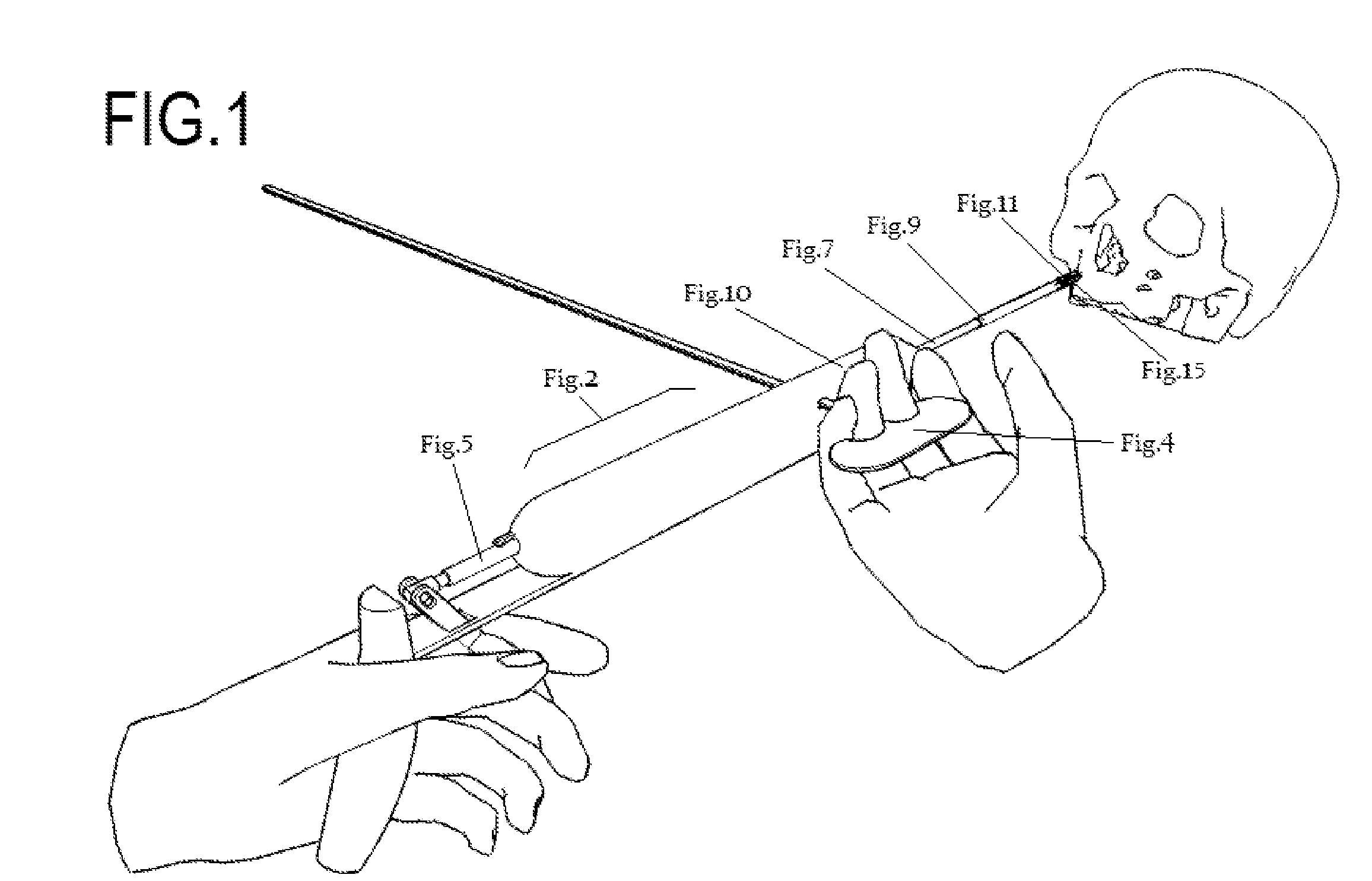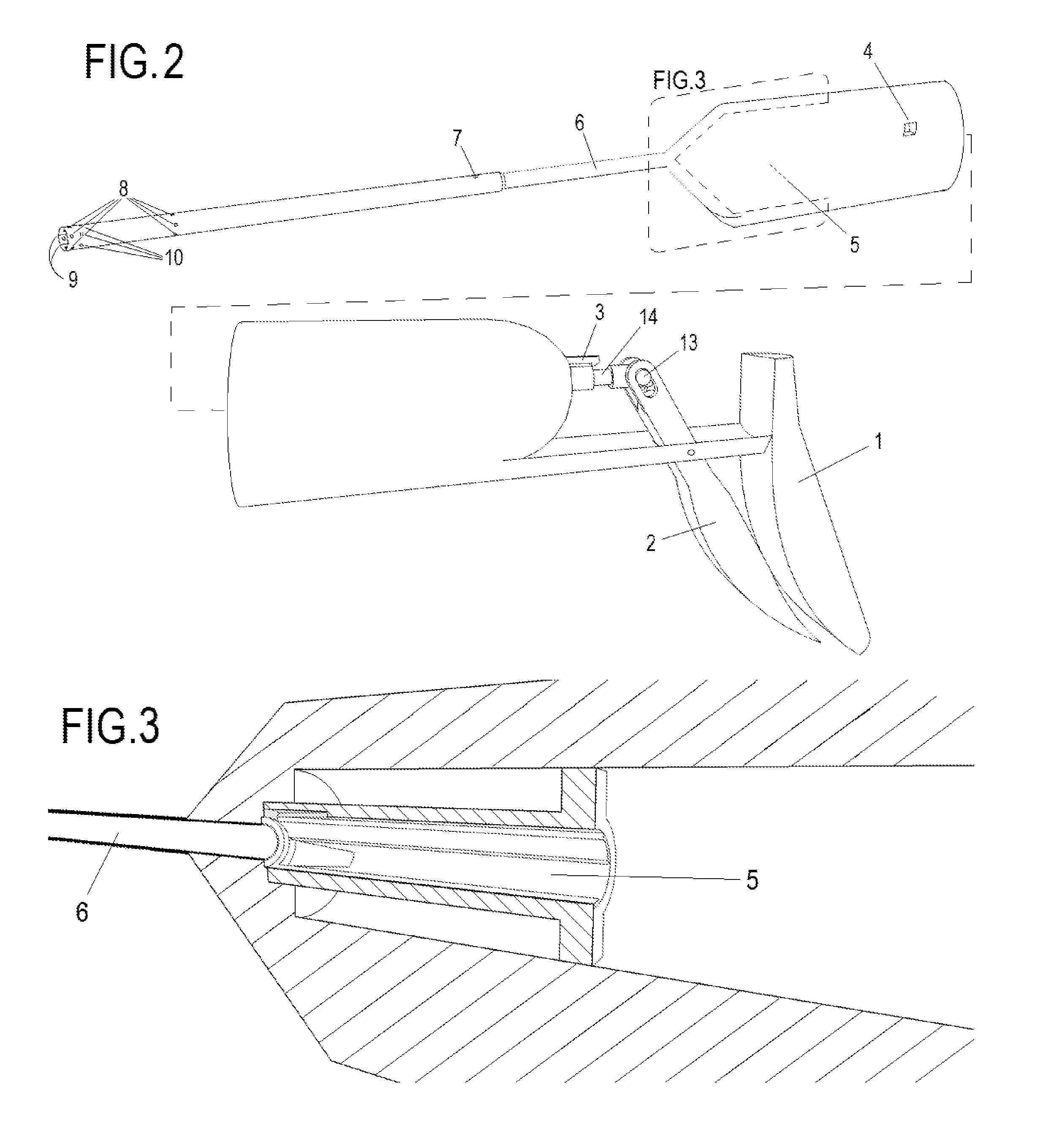Sealing holes in bony cranial anatomy using custom fabricated inserts
a technology of custom-fabricated inserts and cranial anatomy, which is applied in the field of surgical instruments, can solve the problems of long-term morbidity and the closing of the hole in the skull of the endonasal neurosurgery
- Summary
- Abstract
- Description
- Claims
- Application Information
AI Technical Summary
Benefits of technology
Problems solved by technology
Method used
Image
Examples
Embodiment Construction
[0045]The invention deploys a prefabricated insert to seal a skull base defect. The first element of the insert is a disk of a flexible material. The disk can be made of harvested tissue, dural graft substitutes, or other flexible biocompatible materials.
[0046]The flexible material is attached to a central stalk which is pushed by the embodiment to deploy the insert. The central stalk can be made of cured compound so that the stalk will chemically bond to the compound injected or it can be made of another biocompatible compound and held in place when encased in compound to make the seal.
[0047]The insert deploys from being compact within the tip of the embodiment with a series of constraint strings. The strings pass from the flexible disk material to the tip of the embodiment. Pushing of the stalk forward at the center of the graft material and the constraints pulling the edges in the opposite direction forces the graft material to flower open.
[0048]The desired placement of the flexi...
PUM
 Login to View More
Login to View More Abstract
Description
Claims
Application Information
 Login to View More
Login to View More - R&D
- Intellectual Property
- Life Sciences
- Materials
- Tech Scout
- Unparalleled Data Quality
- Higher Quality Content
- 60% Fewer Hallucinations
Browse by: Latest US Patents, China's latest patents, Technical Efficacy Thesaurus, Application Domain, Technology Topic, Popular Technical Reports.
© 2025 PatSnap. All rights reserved.Legal|Privacy policy|Modern Slavery Act Transparency Statement|Sitemap|About US| Contact US: help@patsnap.com



